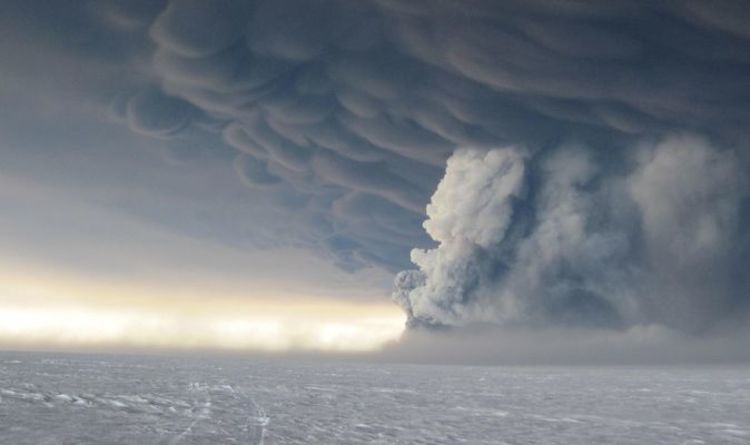Icelandic volcano Grimsvotn erupts in 2011
We use your sign-up to provide content in ways you’ve consented to and to improve our understanding of you. This may include adverts from us and 3rd parties based on our understanding. You can unsubscribe at any time. More info
Grimsvotn last erupted in May 2011 which canceled over 900 flights when it created a major ash cloud seven miles (12km) into the air. The eruption was the largest in Iceland for 50 years.
The Icelandic Meteorological Office has changed the eruption alert from “yellow” to “orange” due to heightened seismic activity and glacial melting surrounding the volcano.
Despite several small earthquakes recently reported nearby, officials say they have not detected any tremors which have caused an increase in underground magma.
Authorities revealed on Monday one of the nearby quakes was a 3.6 magnitude tremor.
On Monday, the Icelandic Meteorological Office (IMO) raised its alert level to “orange” due to “high seismic activity”.
READ MORE: Prince Charles and Camilla urge people to get vaccinated


A “red” level warning would indicate an eruption is imminent and the emission of volcanic ash will likely disrupt air traffic.
The Met Office said: “This seismic activity may be due to the decreasing pressure above the volcano, as the floodwaters have been released from the subglacial lake.
“According to calculations from the Institute of Earth Sciences at the University of Iceland at least 0.8 km3 of water have drained from the subglacial lake.”
Recent eruptions of Grimsvotn have occurred approximately every five to ten years and the eruptions are accompanied by glacial floods such as the one that is currently winding down.
DON’T MISS
Prince Harry mistaken for Christmas tree salesman in Santa Barbara [REVEAL]
Boris Johnson set to urge urge people to work from home [INSIGHT]
Conservative calls for Downing Street resignations grow following leak [UPDATE]

Grimsvotn volcano is located in the Icelandic highland, underneath Vatnajokull – the country’s largest glacier.
According to meteorologists, the ice cap on Grimsvotn’s subglacial lake had subsided by about 252ft (77 metres), and most of the water is now believed to have disappeared.
“Examples are that volcanic eruptions can occur in Grimsvotn after water is drained from there,” meteorologists said.
“It is believed that volcanic eruptions can occur after sudden pressure release due to reduced water level in the lake.
“The last time something similar happened was in 2004, 1934 and 1922.”
Source: Read Full Article
